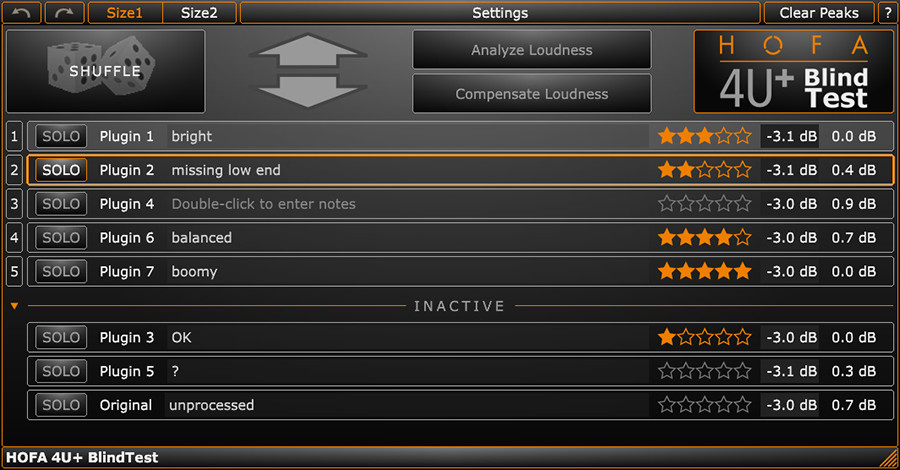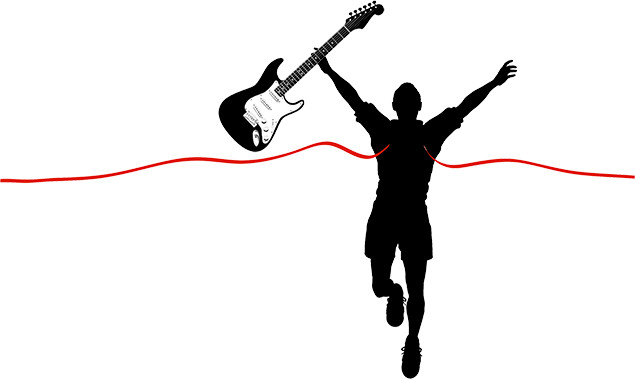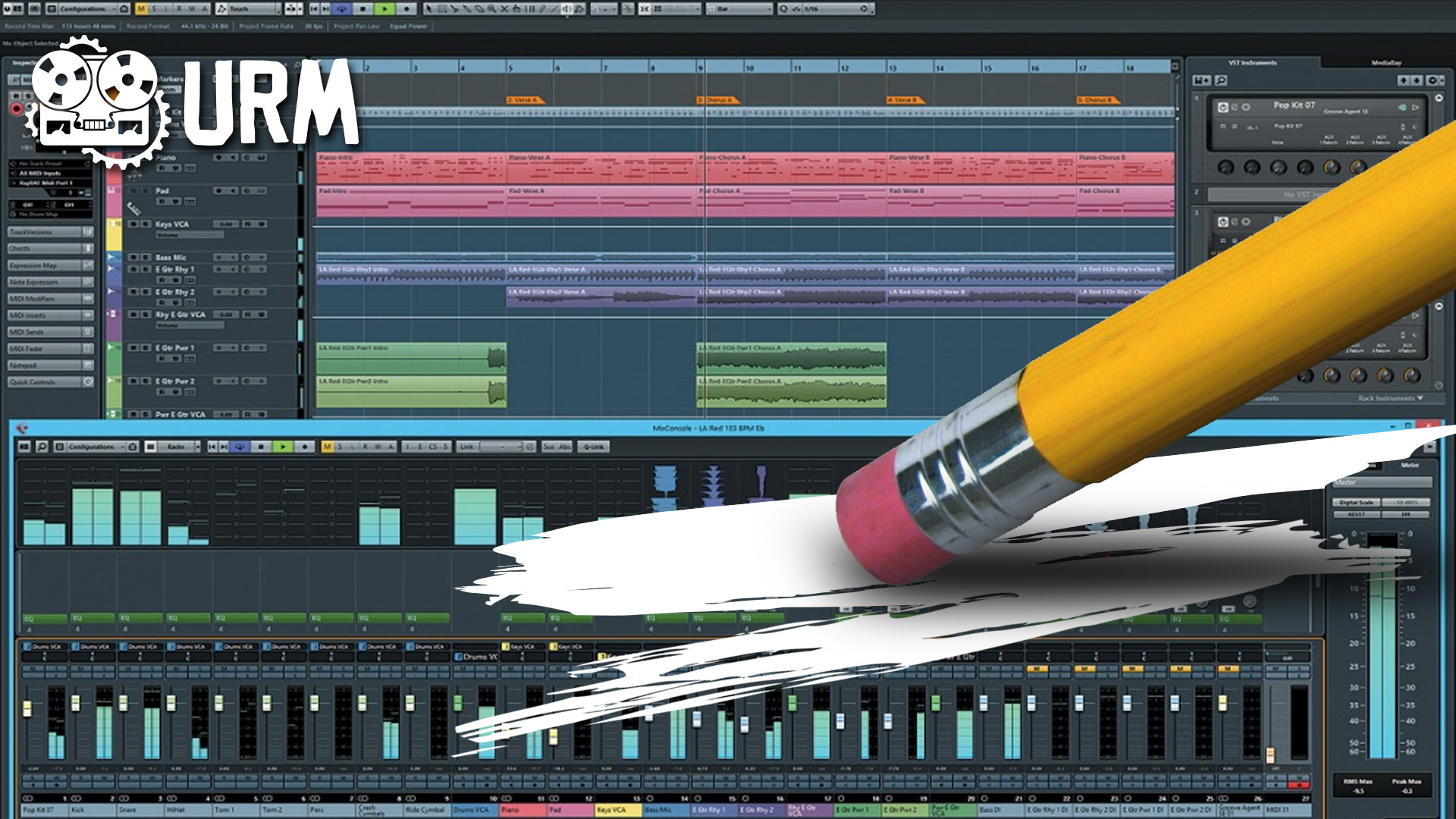It’s Digital, You Can Change It Later… | By Dave Whalen |
Perhaps the most common misconception in the modern, digital world of recording is the idea that you should record everything as pristinely and clean as possible. The reason is simple: it allows you to make critical decisions later in the process. Sure this may allow you to focus on other critical aspect such as performance, but the idea of leaving every other decision until later on can be detrimental to the recording process.
For a long time, I actually subscribed to this theory of recording. Especially as a beginner, the idea that I could tinker around endlessly with the sounds of my recorded takes was extremely enticing.
That’s exactly what I did.
I messed with everything and when I had it perfect, I would mess with it some more. After all, that tambourine part needed to be punchy and vibey and shimmery (or did it?), even though I had absolutely no idea how I would get it there.
In fact, I had so much latitude with how I made creative decisions, hardly any decisions ever got made. No songs ever got completed! In fact, it was probably a good year before my copy of Cubasis VST (which came with my Soundblaster Audigy soundcard) ever saw the end of a song.
And that’s the root of the problem – too many options. Options can actually be the enemy of getting things done, especially if you’re only vaguely familiar with options you have. For instance, if you have 20 different options for EQ, some digital and some modeled, and you’re not intimately familiar with the character or capabilities of any of them, you’re extremely likely to get stuck in a cycle often described as “analysis paralysis,” where you spend too much time analyzing what you’re doing and nothing actually gets done.
Let not your heart be troubled though, there is a solution:

(Take the leap)
Commit early
Make a decision early on and lock yourself into it. Commit to it, and move onto the next decision. This is especially important when deciding on tones. You should always try and capture a high-quality DI’s on your guitars and bass, but dial in a great guitar tone and capture that as well. Try and commit to using it as the final tone. ONLY use the DI as a last resort in case you really screwed it up.
Drum tones are another area where it’s good to commit. If you have a way of dialing in your EQ and some mild compression on the way in, do it. Get those drum sounds as close as you can to what you think the final product will be. You’ll always be able to make small tweaks later to blend the instruments.
Another area where it’s easy to run into trouble is when you’re composing extra synth or string parts for your production. You want to write the part, dial in the settings on the synth or whatever instrument you’re using, print it, and delete the original.
The same thing goes for special effects.
Say you want some sort of delay throw for a vocal track; play with your delay, distortion, reverb and other toys until you hear what you want to hear. When you get it, print it and delete the original track. Repeat this method for all of your vocal effects.
It’s also beneficial to take a similar track with your mixing tools. Personally, 90% of the time I limit myself to 3-4 EQ’s. I know exactly how they sound and how they affect the source material, on every mix. I also limit myself to 2-3 different types of compressors. This enables me to be extremely familiar with how each of these tools behaves under various circumstances. It also gives me the experience to be able to say to myself, “These tools won’t do what I want them to, I’m going to experiment with something new.” This in turn enables me to gradually assimilate other tools into my workflow, allowing me to expand my knowledge of different tools without being overwhelmed by them.
At first, locking yourself into these types of decisions can be a scary proposition. Especially if you’re inexperienced, you may be intimidated at the idea that you don’t know what will sound good as a final product. There’s no doubt, making judgment calls like these requires some experience, as well as confidence in what you’re doing and what you’re hearing. Fortunately, there are a few tactics you can use to get around this until you develop your tastes and style:
Do what you think sounds good
It is entirely possible that you can dial every instrument in your song to perfection individually and it sounds like crap when it’s all put together, but it’s not likely. Remember, every great mix is the result of a thousand small moves which were done well, and most of those moves were on individual instruments. A bass that sounds killer in solo will probably sound great in the mix too.

(HOFA BlindTest lets you do a blind test of different plugins on your tracks)
Do multiple versions of tracks
If you’re having trouble deciding on a sound or are unsure if the end result will fit your mix, do multiple versions of the same track. Use five different chains on your kick or snare or vocal. You’ll probably find that not only does each iteration become less important, but there will be less pressure to get the perfect sound.
Realize there is no “right way” to get a sound
There are a lot of myths surrounding the proper way to get a sound on any given instrument. I call shenanigans! Sure there are tried-and-true methods that will work eighty percent of the time, but twenty percent of the time it won’t work! When you find yourself in that spot, just remember there are no set rules on how to get there. It’s like Chris Lord Alge once said, “Just do it, no one’s going to die.”
Pretend there is no “next stage” in the process
Imagine your DAW malfunctioned and suddenly, you could only use faders and panning to make your mix. Record all of your instruments as if recording is the last stage in the process. When you throw your faders up, it should sound like a mixed song – almost done. When you’re in the mixing phase, pretend there is no mastering process to fix the mix problems. It should sound like a great mix before it ever goes to mastering.

Finish the damn song
This is perhaps the most important part of the puzzle. Creative people don’t become masters of their craft by obsessing over a single piece of work. They get better gradually, over a large body of work. As you finish more songs you will become more comfortable with the process. You’ll begin to realize there are no right or wrong sounds, only what’s appropriate for the context of the song.
So next time you’re tempted to rush through the process of recording so you can get onto fixing everything, don’t. There should be nothing to fix in the first place. Remember, you’re not doing this so that you can be finished with it; you’re making art, and art takes time, dedication, and attention to detail. Get it right from the very beginning.
 Nail The Mix is our online mixing school that gives you REAL multi-tracks from REAL bands, plus a mixing class from the producer who recorded it. Past guests include Periphery, Chelsea Grin, Machine Head and State Champs. Join now for instant access!
Nail The Mix is our online mixing school that gives you REAL multi-tracks from REAL bands, plus a mixing class from the producer who recorded it. Past guests include Periphery, Chelsea Grin, Machine Head and State Champs. Join now for instant access!

One thought on “It’s Digital, You Can Change It Later…”